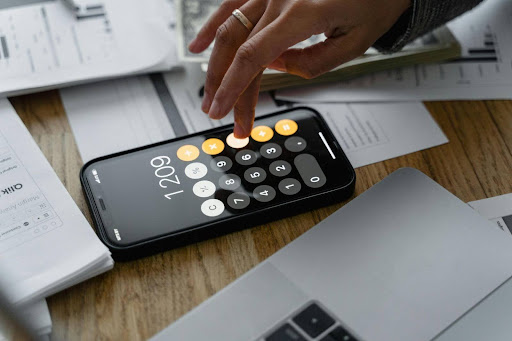Managing money can feel overwhelming, especially when expenses keep adding up, and income seems to disappear too quickly. Whether you’re living paycheck to paycheck or just trying to make your money stretch a little further, learning how to budget is a powerful first step. It’s all about being intentional with your money so it works for you, not against you.
Smart budgeting is about creating a plan that helps you cover your needs, reach your goals, and still have room for the things you value most. With a few practical changes and some consistency, you can feel more in control of your finances and build a foundation for long-term stability.
Here are a few simple and effective budgeting tips that can help you take control of your money and start making confident financial decisions.
Understand Where Your Money Goes
Before you can make a solid budget, you need to know exactly how you’re spending your money. Start by monitoring all your daily expenses for at least a month. You can use a simple notebook, a spreadsheet, or a free budgeting app. Get a clear picture of your current spending habits. Once you see how your finances are allocated, it becomes easier to spot opportunities to reduce spending.
If you feel like you’ve already trimmed your budget to the bare minimum and still can’t seem to make ends meet, it might be time to look at ways to increase your income. One way to do this is by picking up extra work through daily side hustles, freelancing, or weekend gigs. These kinds of jobs can play a big role in boosting your monthly income. Whether it’s delivering food, tutoring, or selling crafts online, these are helping people earn on their own terms while giving their budget a much-needed lift.
Set Clear Financial Goals
Budgeting is easier when you have something to aim for. Think about what you want your money to do for you in the short term and the long term. Do you want to build an emergency fund? Save for a vacation? Pay off credit card debt or student loans? Buy a car or even a home someday?
Write down your goals and be specific. Instead of saying, “I want to save more,” try “I want to save $500 for emergencies in the next three months.” Specific goals give your budget a purpose and make it easier to stay motivated.
It’s also helpful to break bigger goals into smaller steps. For example, if your goal is to save $1,200 in a year, that’s just $100 a month. When you break things down, your goals feel more achievable—and that makes it easier to stick with your budget.
Build a Realistic Budget That Works for You
A good budget isn’t one-size-fits-all. It should fit your income, lifestyle, and goals. The most important thing is that it’s realistic. If it’s too strict, you’re more likely to give up on it.
One simple method many people use is the 50/30/20 rule. That means 50% of your income goes to needs (like rent and groceries), 30% to wants (like eating out or entertainment), and 20% to savings or debt repayment. You don’t have to follow this exactly, but it’s a good starting point.
Your budget should also leave room for flexibility. Life happens, unexpected bills, a night out with friends, or a car repair can throw things off. Planning for these surprises can help you stay on track without feeling frustrated.
Prioritize Essential Expenses First
When you’re building your budget, start with the essentials. These are the things you absolutely need to live—housing, utilities, groceries, transportation, and basic health care. Make sure these are covered before you spend on anything else.
It helps to automate your essential payments where possible. Setting up automatic payments for rent, insurance, or your phone bill ensures they’re paid on time and saves you from late fees or missed deadlines.
Use Tools and Apps to Stay on Track
Technology can make budgeting a lot easier. There are plenty of apps and tools that can help you track spending, set goals, and manage your budget without much effort. Many of them are free and simple to use.
Apps like Mint, YNAB (You Need A Budget), and EveryDollar can link to your bank account, categorize your expenses, and show you where your money is going in real time. Some even send alerts when you’re close to going over budget or when a bill is coming up.
If you prefer to keep things basic, a spreadsheet or budget template can work just as well. The key is to find a system that fits your style. If it’s easy to use and you don’t mind checking it regularly, you’re more likely to stick with it.
Review and Adjust Your Budget Regularly
A budget isn’t something you set once and forget about. Your financial situation can change from month to month—maybe your income goes up or down, or your expenses shift. That’s why it’s important to check in with your budget regularly.
Try to review your budget at least once a month. Look at what worked, what didn’t, and where you went off track. Did you spend more than planned in one area? Did you hit a savings goal faster than expected? Use that info to adjust your plan going forward.
This step doesn’t have to take long. Just 15–20 minutes to go over your numbers and make small changes can help you stay on top of things. If you share your finances with a partner, this is also a good time to talk together and make sure you’re on the same page.
Smart budgeting is one of the best ways to take control of your money. It doesn’t have to be complicated or stressful. With a few simple steps—like tracking your spending, setting clear goals, and making small changes—you can make a real difference in your financial life.
The most important thing is to start. You don’t need to be perfect, and you don’t have to get everything right the first time. Just begin with one small change, then build from there. Over time, these habits can lead to more savings, less stress, and more freedom to enjoy the things that matter most to you.






